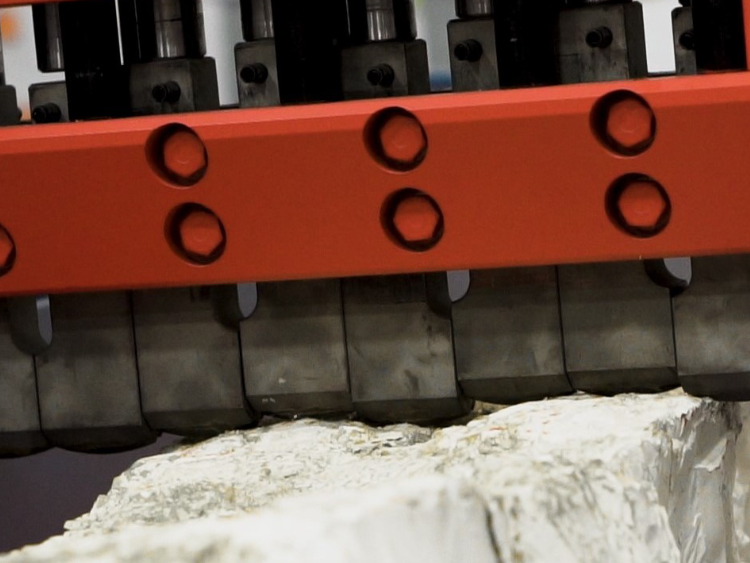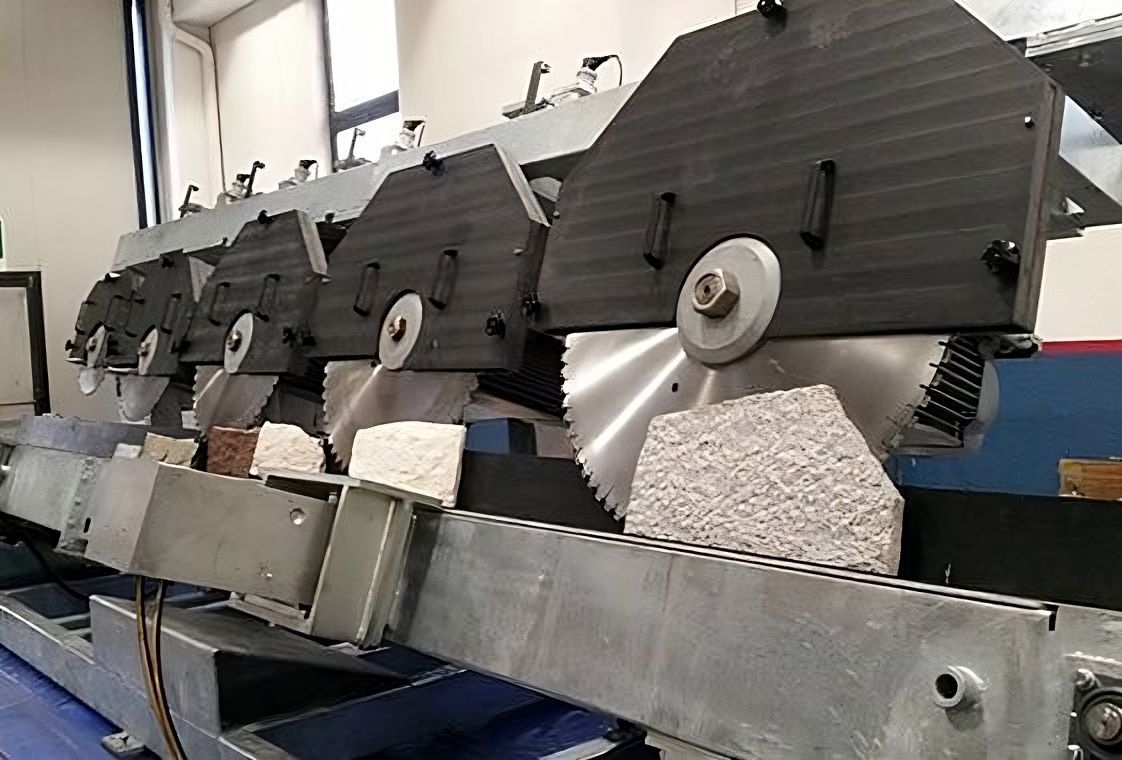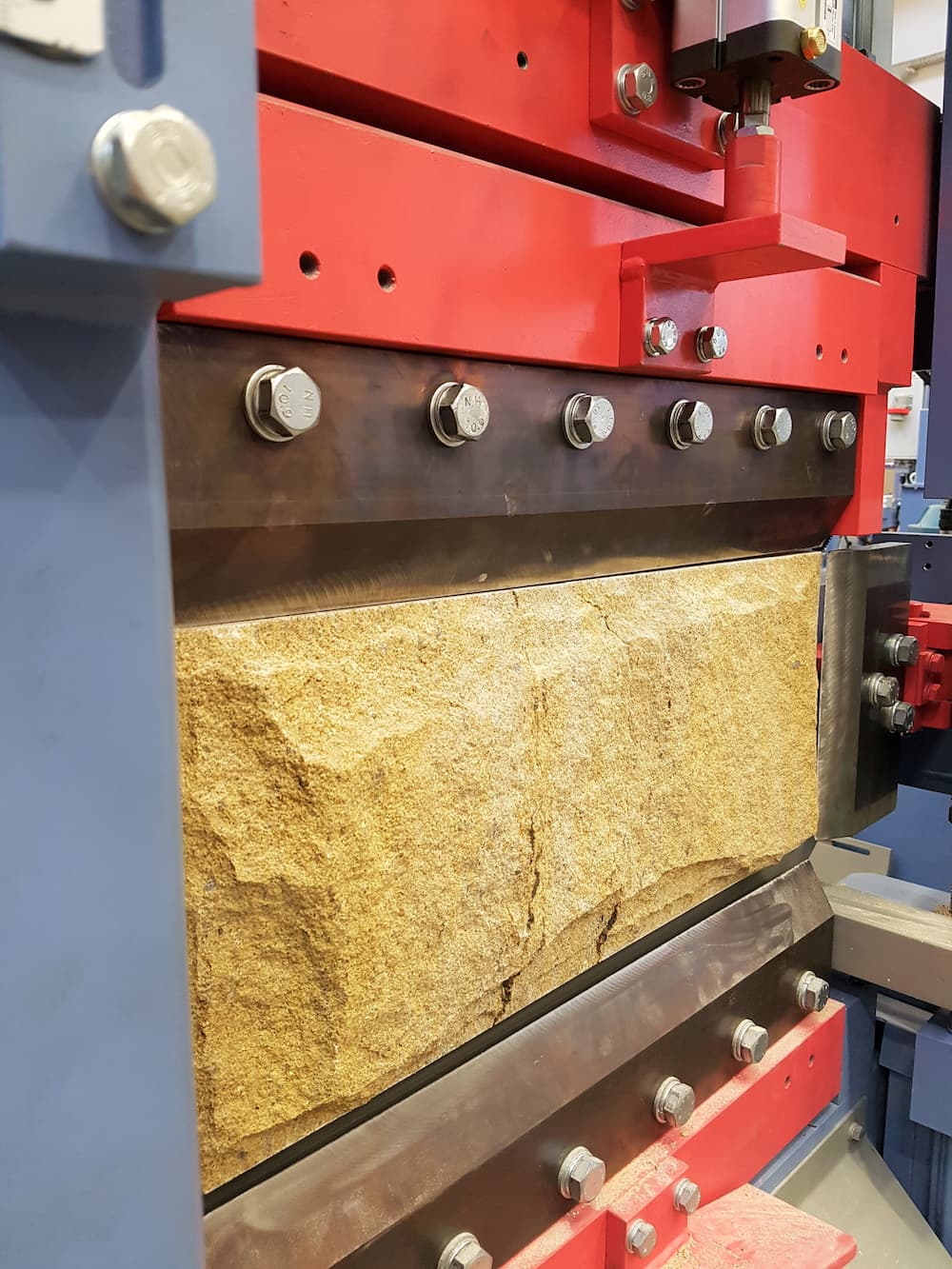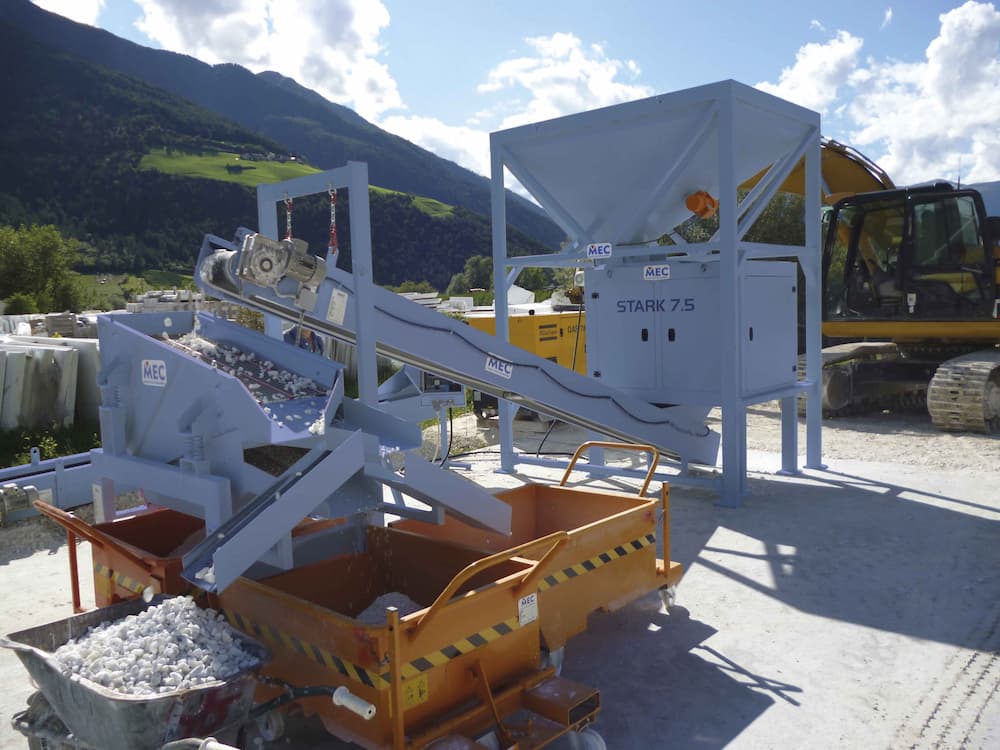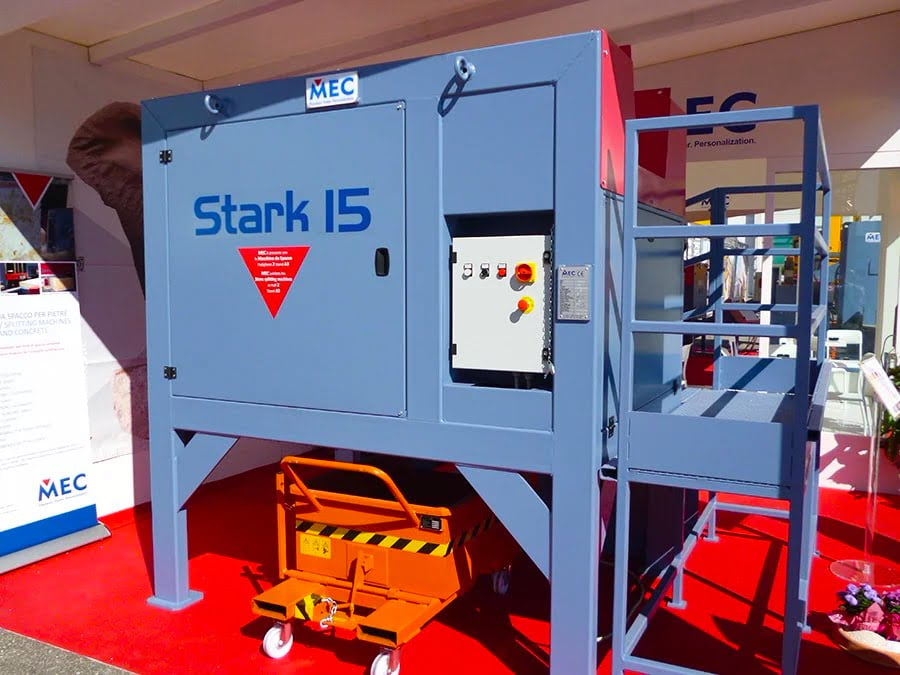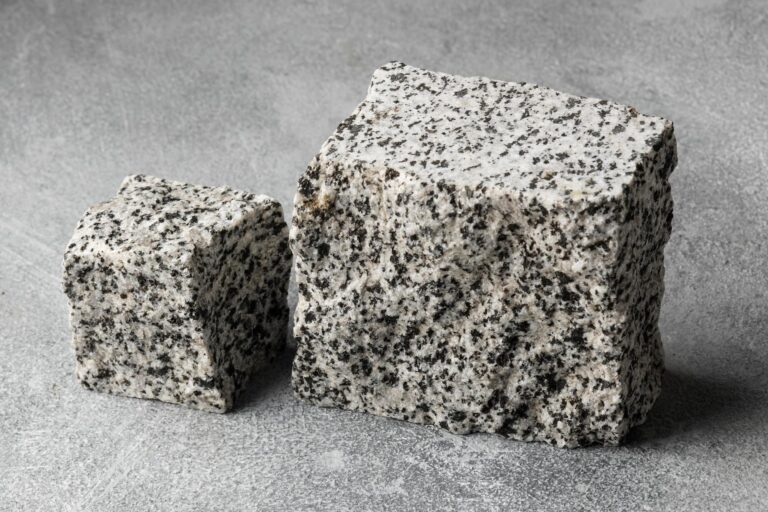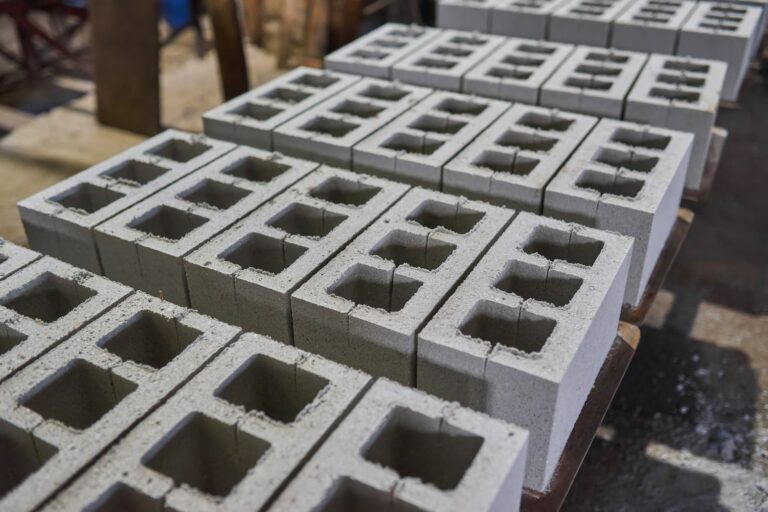Concrete crushing is a crucial step in optimizing construction processes, reducing costs, and giving new value to waste materials. In this guide, our MEC experts share the know-how we’ve gained over more than 25 years of experience to walk you through this process: what it is, why it matters, how it works, and which machines are best suited to perform it efficiently, safely, and sustainably.
Key points of the article
- Concrete crushing is key to optimizing construction processes, reducing costs, and improving environmental sustainability.
- Benefits of crushing include reducing waste volume, recovering and recycling materials, separating steel from concrete, and reducing disposal costs.
- MEC offers high-quality machines such as Crunch, Stark Series and Power Crusher, each with specific features to suit different crushing needs.
- Choosing the right crusher depends on various factors such as the type of material, desired throughput capacity, and available space.
- Optimizing crushing means taking care of regular maintenance, pre-sorting material, and properly training operators.
What is concrete crushing?
Concrete crushing is an industrial process that reduces structural elements made of reinforced concrete—such as beams, columns, slabs, or debris—into smaller, more manageable fragments.
This is achieved through the use of dedicated machinery known as crushers, which apply controlled mechanical force to break down the material to the desired size.
Crushing is a key phase in the recovery and recycling of construction waste, allowing inert components (gravel, sand, cement) to be separated from the steel reinforcements embedded within the concrete.
Why is concrete crushing important?
Crushing reinforced concrete isn’t just a technical necessity—it’s essential for working more efficiently on-site while reducing environmental impact. The benefits are many:
- Crushed material takes up less space, making it easier to store, handle, and transport.
- The resulting aggregates can be reused for road foundations, fill material, or as raw material for new concrete.
- It enables effective separation of steel from concrete, facilitating the recovery of reinforcement bars.
- On-site crushing cuts down on disposal and logistics costs.
- It minimizes the need for new raw materials, lowering the overall environmental footprint of the project.
- It streamlines operations: sites become cleaner, faster, and safer thanks to improved waste management.
Who needs concrete crushing?
Concrete crushing is essential in many sectors and for a wide range of professionals:
- Demolition companies: to manage and reduce construction waste directly on-site.
- Construction firms: to recycle material and optimize their cost structure.
- Authorized landfills and recycling centers: to process and repurpose inert waste.
- Municipalities and public administrations: for urban maintenance and demolition waste management.
- Precast concrete manufacturers: to recover scraps and out-of-spec pieces.
- Mining and industrial sectors: when dealing with concrete-based materials mixed with other components.
How does a concrete crusher work?
A concrete crusher uses mechanical force—via compression, impact, or shear—to break down the material gradually.
The main processing steps include:
- Feeding: material is loaded into the crusher via conveyors, loaders, or buckets.
- Primary crushing: material is reduced to smaller chunks using jaws, rollers, or hammers.
- Secondary crushing (optional): for even finer aggregate sizes.
- Steel separation: magnets or screening systems are used to isolate rebars from the concrete.
- Discharge: the crushed material is ejected via belts or hoppers.
Our top machines for concrete crushing
For over 25 years, MEC has been designing and building customized solutions for reinforced concrete crushing. Here are some of our most efficient and versatile machines:
Crunch
Crunch is a compact jaw crusher designed for small to medium-sized construction sites, light demolition, and mobile recycling setups. It can process up to 20 tons per hour, delivering great productivity even in confined spaces. Its strength lies in its compact design, making it easy to integrate into various operations, and in its high accessibility for maintenance, making it an ideal choice for those looking for simplicity, reliability, and flexibility.

Stark Series
The Stark Series includes primary jaw crushers of various sizes, with processing capacities ranging from 10 to 60 tons per hour depending on the model. These machines are built to crush large reinforced concrete blocks, featuring an extremely robust structure and proven technology that ensures high performance under any condition. Their key advantage is long-term reliability—an investment built to last for demanding operations that require power and consistent output.

Power Crusher
Power Crusher is an all-in-one plant that combines concrete crushing and material screening in a single structure. It’s a turnkey solution, ideal for companies seeking an efficient and compact system to manage the entire crushing and sorting cycle. Production capacity is fully customizable. The true value of Power Crusher lies in its integrated design, which simplifies transport and setup while reducing overall time and operational costs.

Which MEC machine is right for me?
Choosing the right crusher for reinforced concrete depends on several key factors:
- Type and volume of material to be crushed
- Degree of reinforcement in the concrete
- Desired output size
- Available space on-site or at the plant
- Frequency of use (continuous or occasional)
- Budget and expected ROI
How to optimize concrete crushing
To get the most out of your crushing process, several aspects should be optimized:
- Pre-sorting materials: removing visible rebar and non-crushable items reduces wear on the machine.
- Regular maintenance: blades, jaws, and bearings should be checked and replaced as needed.
- Speed and pressure settings: proper calibration of operational parameters boosts productivity.
- Uniform granularity: use the correct jaw or grid settings to achieve consistent output.
- Operator training: a well-trained team works more safely and minimizes management errors.
Other methods for crushing concrete
In addition to professional crushers, there are other methods for demolishing and breaking down concrete:
- Pneumatic hammers or breakers: suitable for small manual jobs, but slow and labor-intensive.
- Hydraulic shears on excavators: ideal for elevated demolitions and construction sites.
- Controlled explosives: used in complex demolitions, require specific authorizations.
- Mobile crushers on wheels: perfect for temporary job sites, enabling on-site processing.
- Hydraulic pressure systems: use high-pressure water to break concrete (less common).
- Crushing buckets mounted on loaders: ideal for processing small volumes directly with site equipment.
Conclusion
In conclusion, concrete crushing is an essential process for optimizing costs and improving sustainability on construction sites. With the right crushing plant, material recovery and recycling operations can be more efficient, economical, and environmentally friendly. MEC offers customized solutions designed to meet each customer’s specific needs, ensuring high performance and reliability over time. If you would like to find out more about how concrete crushing can improve your business, contact us for a consultation.
